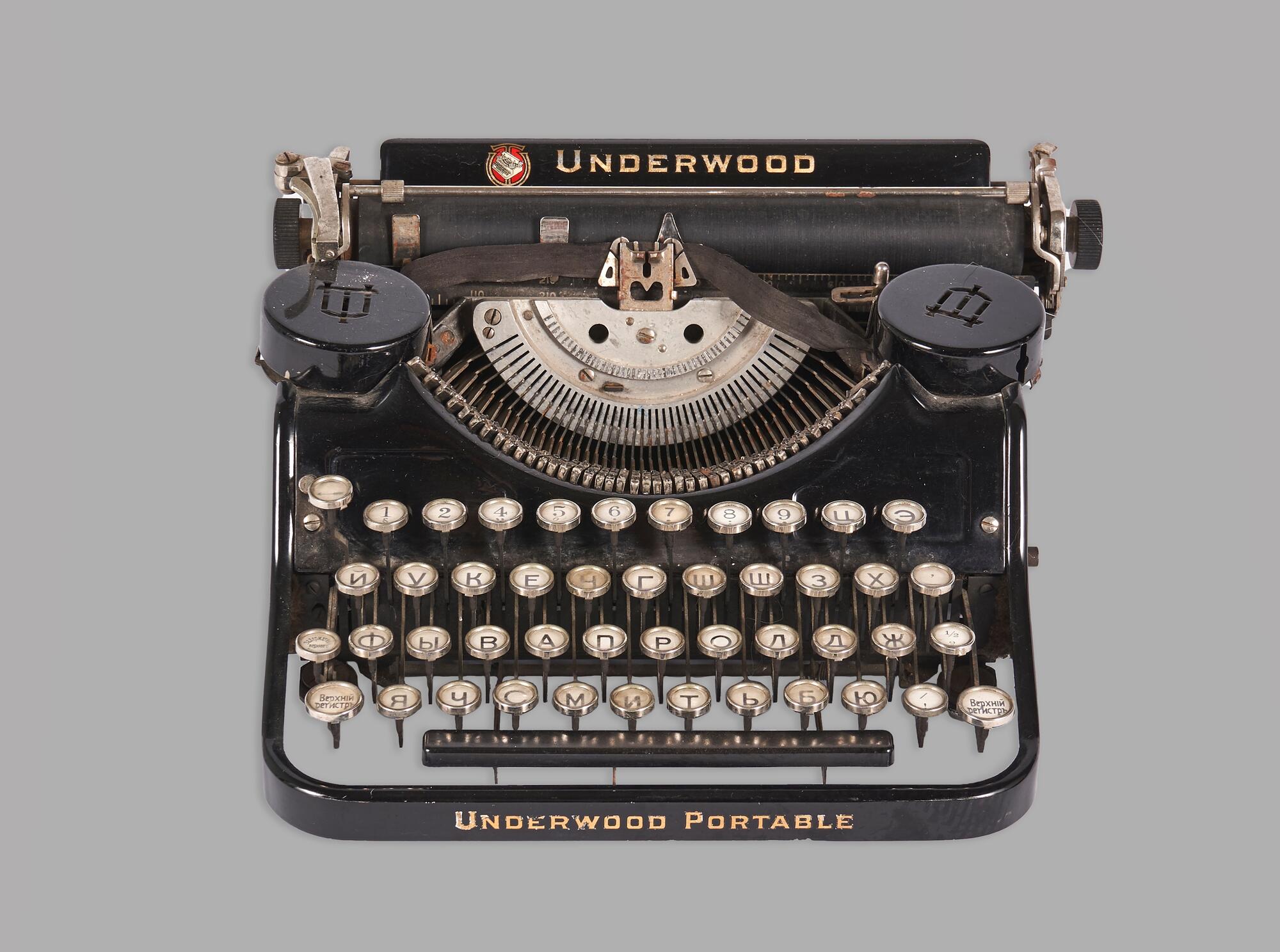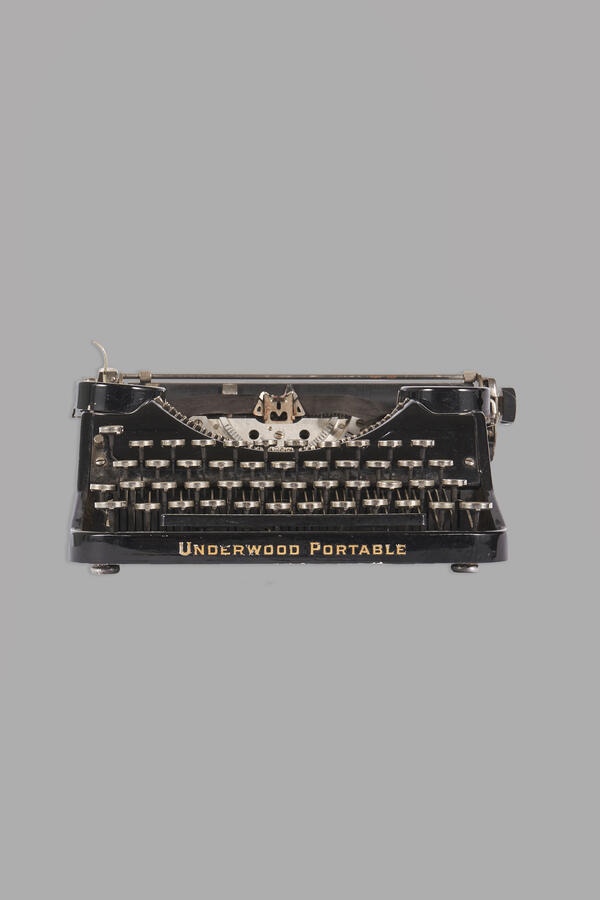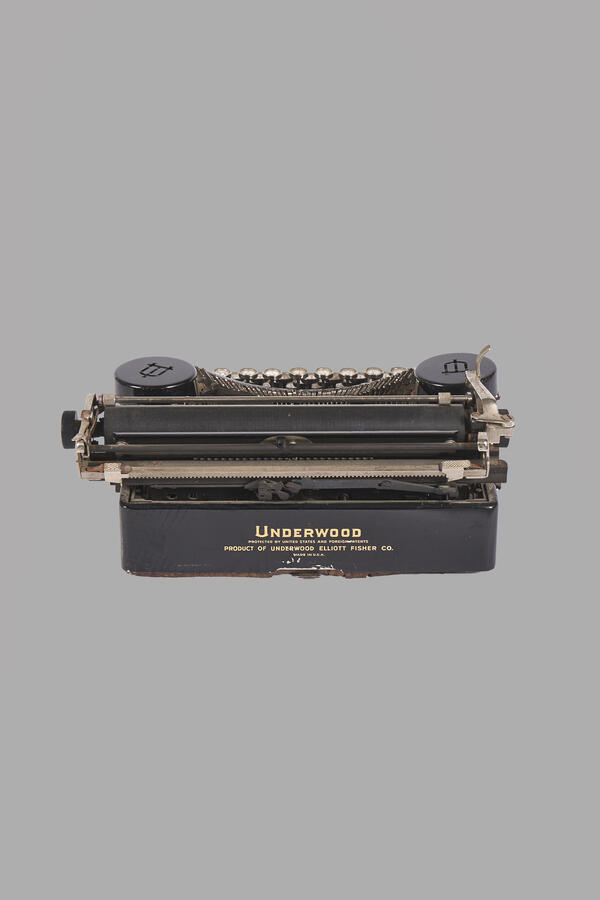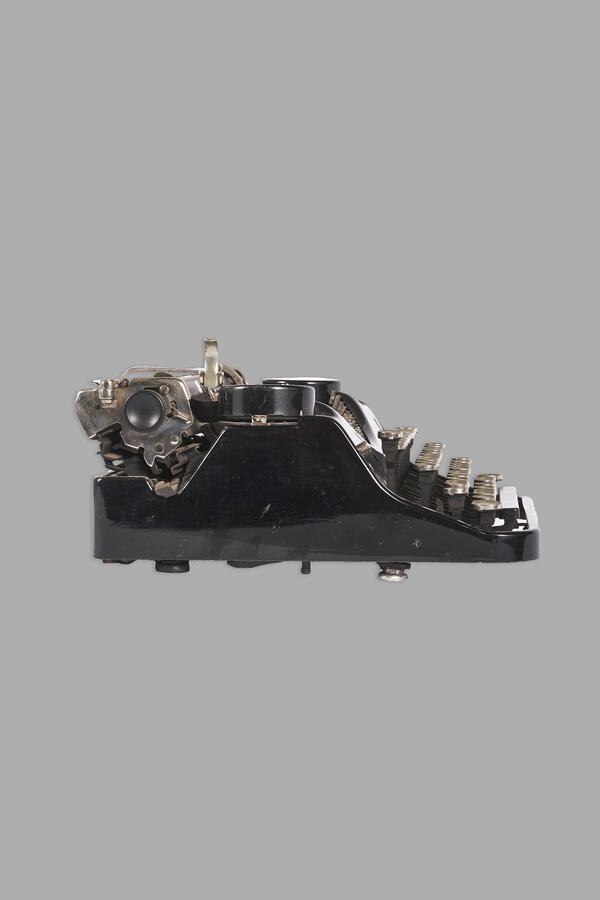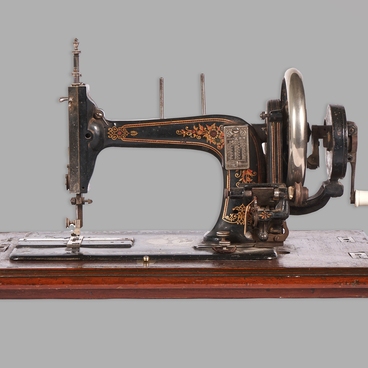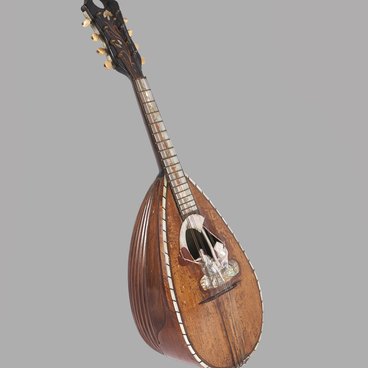In the pre-computer era, typewriters were standard office equipment used to type various kinds of official, literary and personal texts. Unlike a computer user, who could easily correct any typos and errors found during proofreading with the Delete key, a typist would have to either retype the text or apply a piece of correction tape and retype with the correct characters. This manipulation required experience and took a lot of time. No wonder then there was a job called “typist” or “secretary/typist”.
Experienced typists who could quickly print texts without errors, as well as notice and correct mistakes made by the author of the text, were worth their weight in gold. It took years of hard work to achieve this level of professional excellence.
The museum displays a rare portable mechanical typewriter of the legendary Underwood brand. This American company produced typewriters that became the symbol of their time. Underwood typewriters were produced under a patent in many countries of the world, including pre-revolutionary Russia.
Vera Panova wrote in her novel “Kruzhilikha”, “Anna Ivanovna transcribed the lecture notes and retyped the transcript on her old-fashioned Underwood typewriter with a large carriage. Underwood thundered like a freight train.”
The typewriter from the museum’s collection is one of the most mass-produced models — Underwood No. 5. Made in the 1930s, it was reliable and durable, small and light, and it had an elegant and adequate design. A special case, where it was placed, made its transportation convenient.
The typewriter had three main parts: the body with the main mechanisms inside, the keyboard on top of the body, and the carriage moving in two directions during typing and designed to transport the paper sheet.
This typewriter used to belong to Fyodor Vasilievich Gladkov, a writer and advocate of Socialist Realism, who lived and began writing in Novorossiysk. The typewriter is on display in the Memorial Cabinet of F.V. Gladkov.
Experienced typists who could quickly print texts without errors, as well as notice and correct mistakes made by the author of the text, were worth their weight in gold. It took years of hard work to achieve this level of professional excellence.
The museum displays a rare portable mechanical typewriter of the legendary Underwood brand. This American company produced typewriters that became the symbol of their time. Underwood typewriters were produced under a patent in many countries of the world, including pre-revolutionary Russia.
Vera Panova wrote in her novel “Kruzhilikha”, “Anna Ivanovna transcribed the lecture notes and retyped the transcript on her old-fashioned Underwood typewriter with a large carriage. Underwood thundered like a freight train.”
The typewriter from the museum’s collection is one of the most mass-produced models — Underwood No. 5. Made in the 1930s, it was reliable and durable, small and light, and it had an elegant and adequate design. A special case, where it was placed, made its transportation convenient.
The typewriter had three main parts: the body with the main mechanisms inside, the keyboard on top of the body, and the carriage moving in two directions during typing and designed to transport the paper sheet.
This typewriter used to belong to Fyodor Vasilievich Gladkov, a writer and advocate of Socialist Realism, who lived and began writing in Novorossiysk. The typewriter is on display in the Memorial Cabinet of F.V. Gladkov.
